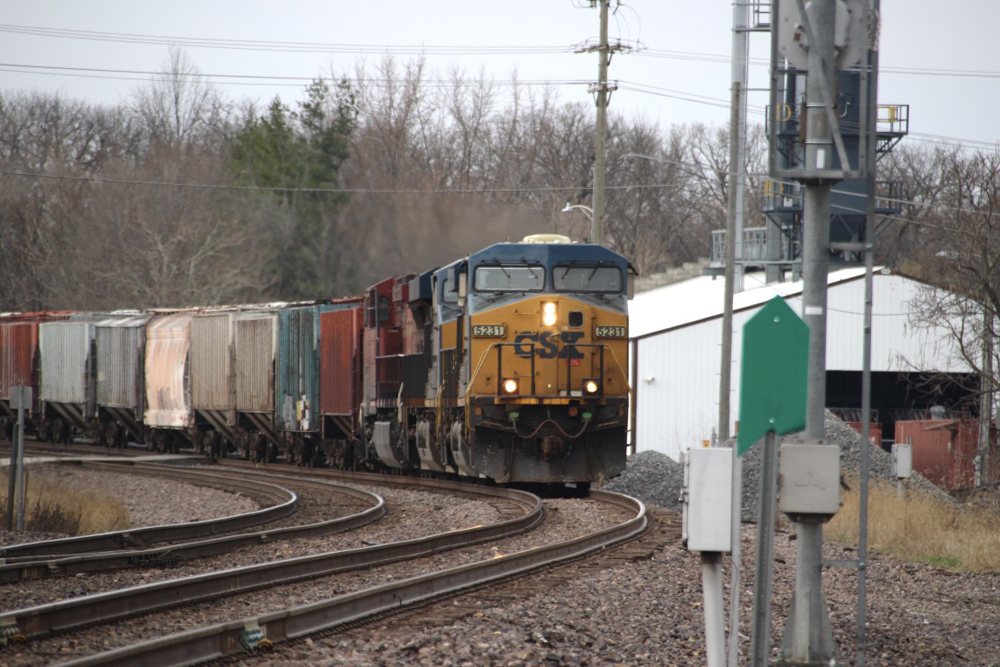
WASHINGTON — There were more questions than answers on Tuesday as federal regulators sought ways to remedy railroad service problems that defy a quick fix because they are rooted in a shortage of train crews.
Shippers told the Surface Transportation Board that rail service has deteriorated, with delays mounting as transit times have in some cases doubled from normal levels. The slowdown in rail network velocity has forced shippers to curtail or suspend production due to late empty or loaded freight cars, and even prompted farmers to consider culling their herds and flocks for lack of feed.
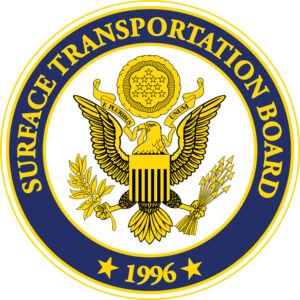 Railroad performance metrics need to improve soon, STB Chairman Martin J. Oberman told the railroads. “The country is going to have a lot of trouble if 30 days and 60 days from now these numbers aren’t much different,” he says. “If we’re relying only on hiring, I don’t see you being able to get there in 30, or 60 or 90 days. We’re going to miss the planting season, we’ve got fuel problems. That’s what I’m concerned about.”
Railroad performance metrics need to improve soon, STB Chairman Martin J. Oberman told the railroads. “The country is going to have a lot of trouble if 30 days and 60 days from now these numbers aren’t much different,” he says. “If we’re relying only on hiring, I don’t see you being able to get there in 30, or 60 or 90 days. We’re going to miss the planting season, we’ve got fuel problems. That’s what I’m concerned about.”
A range of shipper associations, joined by the U.S. Department of Agriculture, asked the STB to take several steps that they say will improve service and spotlight problems in the rail network.
The board should clarify railroads’ common carrier obligations, impose penalties for poor service and inefficient use of privately owned freight cars, and expand reciprocal switching. They also sought a simpler way to challenge rates, urged the board to require railroads to provide first- and last-mile service data, and said railroads should have to file annual service assurance plans. And they applauded the board’s proposal to adopt a new rule that would expand its emergency service powers.
Oberman, during the first day of a planned two-day hearing, asked shippers if there were any steps the board could take in the next 30 to 90 days that would improve service.
Shippers were at a loss as to what remedies the board could adopt immediately. “If we had a silver bullet we would have brought it to you,” says Chris Jahn, CEO of the American Chemistry Council, the trade group representing chemical manufacturers.
Transportation Secretary Pete Buttigieg acknowledged that there wasn’t much the board could do in the face of crew shortages. “These are complex issues,” he says. “There’s no single step available to deliver ideal freight rail service overnight.”
But Buttigieg raised concerns about train crew layoffs during the pandemic that began in the spring of 2020. Since then, traffic has rebounded but railroads have struggled to retain and hire conductors in a tight job market.
“First and foremost, we must invest in rail workers, who keep our economy running. Turnover is still far above normal levels, which presents both safety and workforce concerns,” he says. “We need a full and robust workforce to keep people and goods moving across the country.”
Jewel H. Bronaugh, deputy secretary of the Agriculture Department, told the board that when railroads charge unreasonable rates and provide poor service, farmers struggle to make ends meet, consumers spend more at the grocery store, and U.S. agricultural products can’t compete in the global market.
She also was critical of Union Pacific’s plan to meter traffic as a way to ease congestion. “USDA understands that with limited capacity, some traffic must be prioritized, and reductions in the number of cars online may help the system move,” Bronaugh says. “However, fertilizer and agriculture commodities are not the commodities to deprioritize, especially as we now enter the growing season.”
PSR Looms Large
Shippers and rail labor blamed service issues on Precision Scheduled Railroading and related job cuts over the past five years. The loss of 45,000 rail jobs, combined with the idling of locomotives, freight cars, and yards, has gutted the rail system and made service problems inevitable, they claimed.
They also said Wall Street’s focus on ever-lower operating ratios has led to relentless cost-cutting at the big railroads, with profits put ahead of safety and service. “Today’s freight rail network is not working for anyone other than railroad investors,” says Greg Regan, president of the Transportation Trades Division of the AFL-CIO.
Jeremy Ferguson, president of the SMART-TD union, told the board that six years ago — prior to implementation of PSR — railroads had a robust workforce, an ample supply of locomotives and freight cars, and a put a priority on safety. That’s all gone now, he says.
Now railroads are hemorrhaging workers at record rates due to what he called an abusive work environment, including restrictive attendance policies for train crews. And most newly hired conductors quit during training or shortly after entering service, Ferguson says.
Railroads need to change the culture of their operating departments in order to attract and retain new conductors who want more work-life balance, Regan says. He credited CSX Transportation for taking steps to improve its culture.
Labor leaders were critical of PSR operating practices. Long trains that run over siding length slow service, create congestion in yards and on the line of road, and require more recrews because they can’t make it to the next terminal within the allotted hours of service law.
They also called out railroads for slowing trains to save fuel through the use of energy management systems such as Trip Optimizer. Restricting trains to 40 mph and limiting the number of active locomotives in the consist leads to extended travel times and sometimes requires the use of multiple crews, they say. And they questioned the safety of operating trains as long as 17,000 feet.
Oberman asked labor leaders whether running shorter trains, eliminating speed restrictions, permitting engineers to use all locomotives in their consist, and shutting off energy-management systems like Trip Optimizer and LEADER would help reduce congestion. Their reply: It would improve velocity, reduce recrews, and eliminate bottlenecks almost overnight.
But CSX CEO Jim Foote said running shorter trains would only exacerbate crew shortages. “If you want to … run shorter trains that double the number of trains, you’re going to need twice as many employees. Simple as that,” he says.
Jamie Boychuk, CSX’s executive vice president of operations, says Trip Optimizer offers safety and service benefits by improving train handling and reducing train pull-aparts.
He also disputed labor assertions that railroads operate trains over siding length in both directions simultaneously in single-track territory. “You don’t send two oversiding trains out onto a network and then scratch your head and go, ‘Where are they going to meet?’ Or you don’t shut your network down to run a bunch of trains in one direction,” Boychuk says. “You go oversiding one way and you go siding length the other. So the siding length trains can go into the siding, while the overlength is king of the road.”
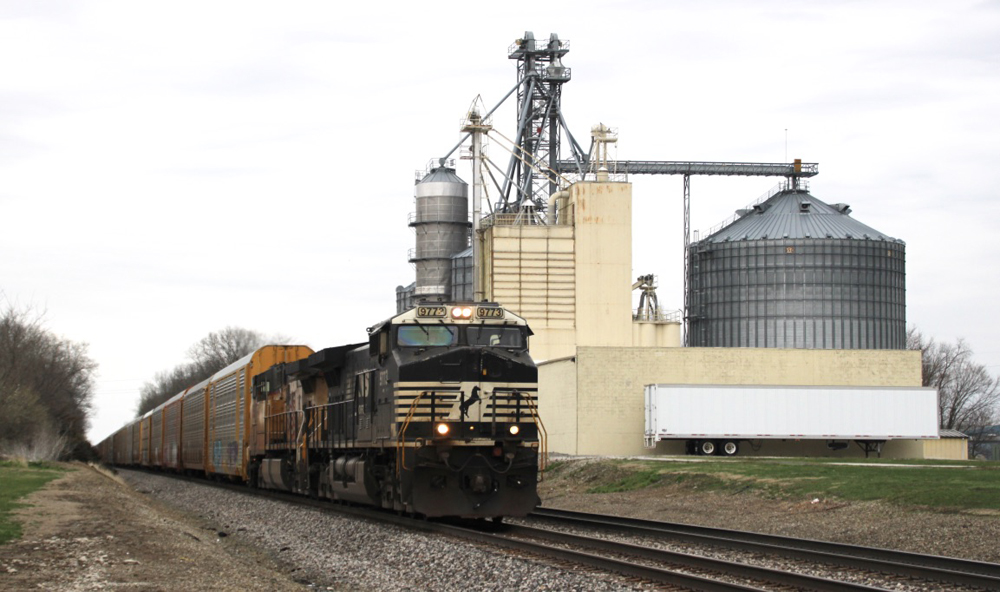
Norfolk Southern doesn’t have a 40-mph speed restriction to save fuel, Chief Operating Officer Cindy Sanborn says. She noted that Trip Optimizer and LEADER are integrated with the dispatching system in positive train control territory so that trains keep moving.
“It’s integrated with PTC in such a manner that trains may go slower because beyond the locomotive engineer’s range of vision – 10, 15 miles down the railroad – there is something that is going to cause that train to stop,” she says. “And so there’s no reason for the train to operate at 60 mph and come to a stop.”
Sanborn noted that at another railroad – she also worked at CSX and Union Pacific – energy management systems were turned off temporarily to see if they reduced average train velocity. It had no impact, she says.
Congestion is focused on yards and terminals, not on the main line, Boychuck says, and most service problems are from a lack of crews that provide local service.
Investor Influence
Rick Paterson, a railroader turned analyst at Loop Capital Markets who closely tracks rail performance metrics, told the STB that a shortage of train crews is the root cause of today’s service problems. A lack of crews inevitably leads to a motive power shortage, as well, because it slows the network and requires more power and freight cars to handle the same amount of volume.
Most companies — including railroads — are struggling to find enough workers. But what makes railroads different is the time it takes to hire, train, and deploy conductors and then six to 12 months to fully restore service, Paterson says.
Performance data show that PSR railroads bounce back more quickly from service disruptions caused by weather or other events, Paterson says.
Railroads don’t keep an adequate cushion of crews, Paterson says, which makes operations fragile and results in a roller coaster of service that rises to good only to fall back to poor every few years. The blame for this, he says, lies with Wall Street’s insistence that railroads continuously reduce their operating ratios. And the easiest way to reduce the operating ratio is to cut costs such as carrying extra crews, he says.
Railroads are trapped in the Cult of the Operating Ratio because if their operating ratio goes up, activist investors may come in and demand change, Paterson said, citing TCI Fund Management’s battle with Canadian National last year.
Railroads are hesitant to grow because new traffic may raise the operating ratio and draw scorn from investors, Paterson says. He encouraged the board to find ways to shift railroads’ focus away from the operating ratio and toward something that would benefit shippers.
NS: Problems all stem from crew shortages
Norfolk Southern executives apologized for service that doesn’t meet the expectations of the railroad or its customers. “There is no greater priority at Norfolk Southern than restoring service,” Sanborn says.
Chief Marketing Officer Ed Elkins says restoring service is critical to the railroad’s plans to gain volume by converting freight from highway to rail.
Annie Adams, executive vice president and chief transformation officer, says NS furloughed train crews as volume fell at the onset of the pandemic. Employees were called back to work as traffic rebounded and NS started hiring, she says. But the tight labor market made it more difficult to hire crews, particularly in the dozen areas on the system that were most affected by higher than usual attrition, she says.
Oberman criticized NS for deep reductions in train and engine crew employment levels, noted crew levels are currently just 62 people above the count from June 2020, and suggested the railroad continued to operate with the “bare minimum.” He pressed NS executives to detail their hiring plans and target train and engine crew headcount.
NS has stepped up its hiring, has 850 conductors in training, and will continue to hire for the remainder of the year and likely into 2023, Adams says. But she declined to provide a target train and engine crew number, citing uncertainty around how the pending rollout of a new operating plan would change crew requirements.
The lack of a precise number frustrated board members.
And board member Robert Primus said NS’s recent announcement that it would buy back $10 billion worth of its own shares was “tone deaf.” Some of the money spent on the stock purchases, he suggested, should go to customers in the form of rebates that would help offset the costs they had to bear from diverting rail shipments to truck amid service problems.
Sanborn said crew shortages were the sole culprit of the railroad’s service problems, not PSR, as shippers and workers claimed. “To varying degrees they are asking you to turn back the clock and return to operating models of the past – operating models that are more resource intensive and less efficient. I think that would be a grave mistake,” she said. “Our competitors in the trucking industry aren’t moving backward. They’re not even standing still. They wake up every day thinking of new ways to leverage technology to implement operational innovations that would improve the customer experience and improve efficiency. And railroads must also think this way.”
Railroads must be able to maintain their efficiency advantages if they are to compete with trucks and the looming threat of autonomous rigs, she added. A simplified, efficient railroad network promotes reliable service that’s good for customers. And she said NS was operating at record on-time performance after implementing PSR in July 2019.
CSX: Service should improve
CSX is pursuing every option to pursue train and engine crew hiring and retain the crews it has, Boychuk told the STB. After a bumpy PSR implementation in 2017, CSX by 2019 had improved service to the best it’s been in the company’s history, he says. And that operating performance came with 2,000 fewer engineers and conductors. “Clearly our performance wasn’t driven by how many resources we had, but rather how effectively we leveraged those resources,” he says.
Crew levels have been rising in recent months and are now higher than they were prior to the pandemic, Boychuk says. CSX expects service to improve in the second half of the year, once conductors in training are deployed in large numbers, says Diana Sorfleet, chief administrative officer.
Foote was not scheduled to testify at the hearing. But Primus called him to join the other executives at the presentation table. “The buck stops with you. It’s important you’re here,” Primus said, noting he was disappointed that NS CEO Jim Squires and President Alan Shaw did not attend.
Foote said the railroad has struggled amid crew shortages but has done the best job it could. “We are finally making the turn and we are coming out of this,” he says, emphasizing that the only reason for service problems is a lack of crews.
Primus was critical of the railroad for furloughing too many crews and not being resilient once traffic rebounded from pandemic lows – all because of a focus on operating ratio. That led to a testy exchange between Primus and Foote, with the two often speaking over each other.
Primus wanted to know how many engineers and conductors CSX needs to restore service and whether it would keep a cushion of train crews.
Foote said CSX plans to operate through hurricanes, floods, and winter weather. “Did we have a pandemic plan on how to run the railroad without people? No,” he says.
Primus accused CSX of not having a recovery plan, but Foote said he had just explained the railroad was hiring crews as quickly as possible.
The hearing, which ran 10 hours on Tuesday, continues today beginning at 9 a.m. EDT, with executives from BNSF Railway, Union Pacific, Canadian National, and Canadian Pacific scheduled to appear.

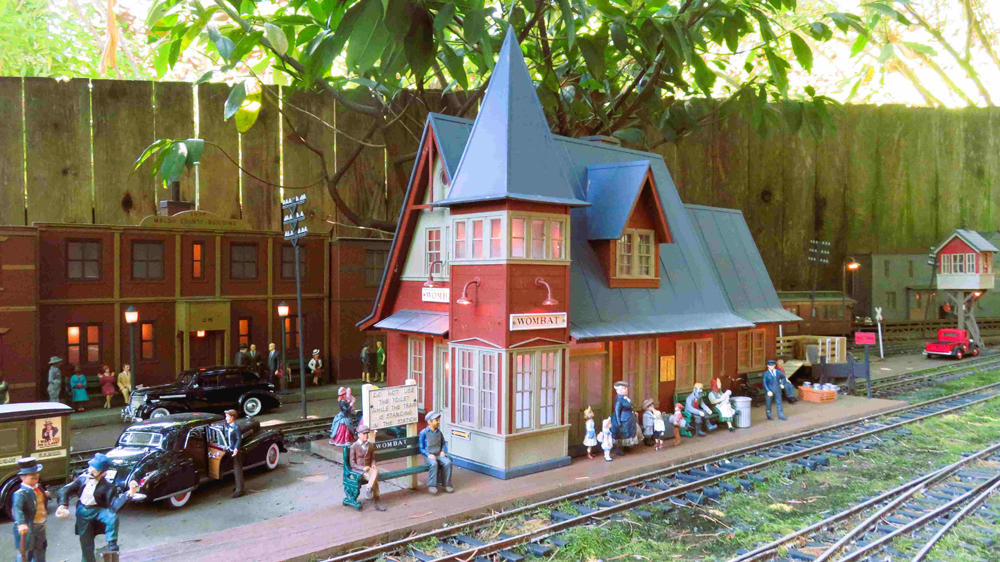

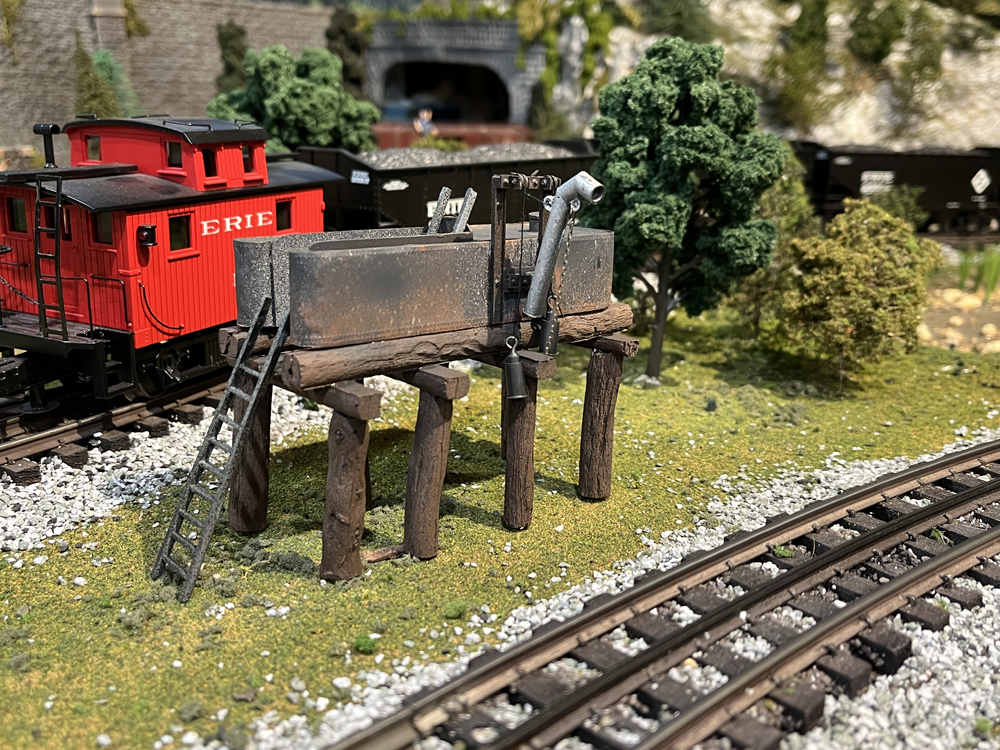
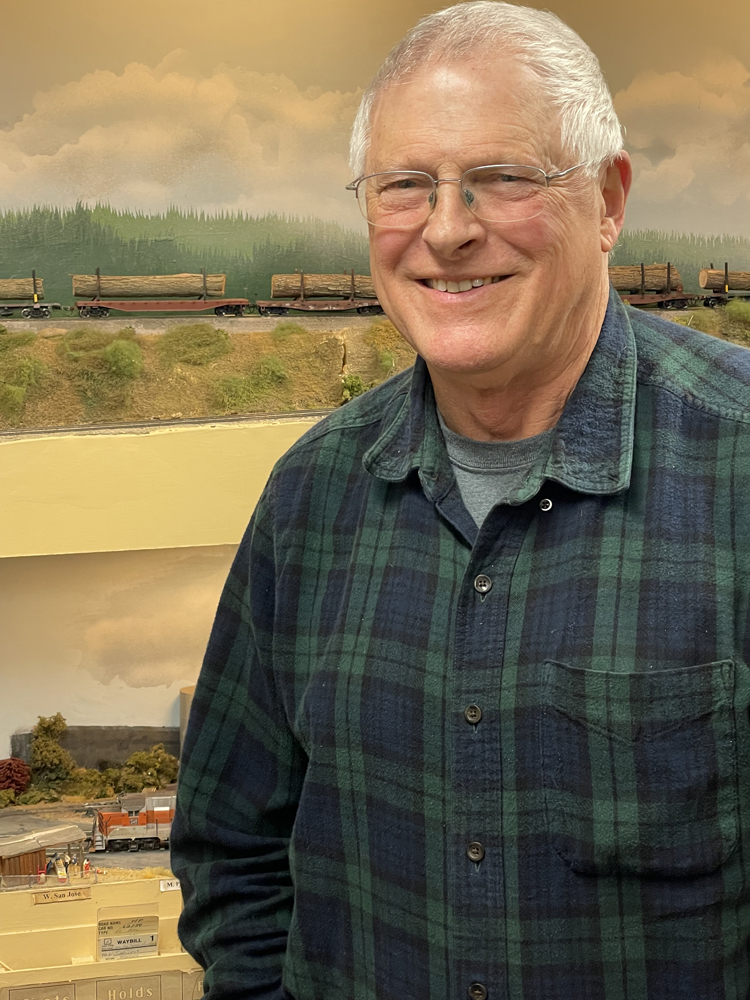




You cannot take a new hire, a trainee, on their first day alone and make them run an RCO job. You just can’t expect them to stay under that much pressure. Yard Masters screaming, Trainmasters wanting to know what the hell is going on, assistant Superintendents wondering why they themselves are even there.
You can’t train them for however long they get and then throw them in the fire and expect them not to run. “It’s as simple as that,” as Jim Foote likes to say.
ANDY you win the dumbest comment of the week award, wake up and get out of the dream world
At this point, the only thing that can really put an end to these issues is total nationalization. Re-establish Conrail, but on a national scale instead of just the Northeast and parts of the Midwest. If there are any parallel lines, give these to private concerns; for example, here in California, there are two mainlines running through the Central Valley: UP and BNSF; one line could be nationalized, and the other could be given to the San Joaquin Valley Railroad, who are already operating many ex-SP and ATSF branchlines in the valley. This way, parallel lines can stay in operation without pissing off shippers or the new Conrail having to set a Dr. Beeching-esque hatchet man on the network.
Two measures the Board can implement to make traffic hyandled by more than one carrier more efficient. These can be emergency measures only or extended permanently.
1. Interchange traffic should move via the most efficient rout, not necessarily the rout that maximizes the originating carrier’s revenue. Traffic now moves from A to D and D to A. BNSF serves A, B, C, and NS B, C, and D. Now A-D traffic is intercahaged at Cm but D-A traffic B. Both directions should use what is most efficient.
2. All tracks within the logical geographical limits of major interchange cities should be neutral, regardless of company ownership, with both interchange and through traffic moving the most efficient way. The various Conrail Shared Assets operations are a model, where both NS and CSX benefit. Cities include Chicago, St. Louis, New Orleans, Houston, the Bay Area, Kansas City, Detroit, Los Angeles, Pitts burgh. In the Chicago area, the EJ&E should be use, up to capacity, by others than just CN, with CN compensated bu improved fluidity at the other gateways.
Curt Warfel has said it best from a point of view of a rail shipper amongst all of us.
Check out the letter, that was printed in Railway Age from a spouse to the STB about how their lives have changed and how not great work life balance has become horrendous in the last few years. Very moving and eloquent. https://www.railwayage.com/regulatory/at-what-point-is-this-not-worth-it/?RAchannel=news
Love the idea of reverse demurrage charges. But they have to be high enough to be a counter weight to pressure for maximizing shareholder returns by cutting costs to the bone
So… it’s not PSR’s fault, but it all starts from crew shortages. Right.
And who exactly did fire those crew members, discouraged them from coming back to work, treated the remaining workers like medieval serfs, and still expected a bit of loyalty? So much operating expertise and wisdom lost.
These large-scale workforce reductions were brought by PSR ideology. and railroads brought this upon themselves. Time to regulate them again.
I’ve been watching the hearing yesterday and today.
Thinking back to something BOTH NS and CSX mentioned yesterday. Neither places throttle limitations on intermodal. I would imagine this is because the intermodal contracts carry service commitments with penalties for failure to perform.
Now, any loose car shipper knows that no matter how large your annual freight bill, railroads will not include service commitments of any kind in contracts governing loose car / manifest traffic.
Although I believe the shipper panels have done a good job outlining the negative impact of lousy rail service on their businesses, one concern I have is the attention being paid to making the railroads report first mile / last mile data. In my opinion as a 40 year rail shipper, all one more data point will do is validate what the shippers (and railroads) already know – service stinks.
Several panelists have mentioned reverse demurrage whereby the railroads would pay shippers for delays involving private equipment or for missed switches. THIS should be the focus of the board. Until the railroads take a significant out of pocket “hit” for failing to provide reliable service – similar to that they would experience with deficient intermodal service – they have no incentive to displease their Wall Street masters by elevating manifest shipper needs to the same level of importance currently given shareholders.
The railroads might argue they are already seeing a penalty via lost volume but, the most recent quarterly reports from the C1’s reporting higher revenue on lower volume obviously puts the lie to this. Too, the rail analyst newsletter Ross Corthell noted this morning, that advises investors it saw no potential harm from the STB to amend Emergency Service rules despite the disgraceful service currently being provided, only serves to validate the need to make the railroads and investment community see financial penalties when rail service melts down.
The board should take immediate steps to require the C1’s to compensate shippers for extraordinary costs associated with rail service failures. This ultimately will do more to prevent future rail service meltdowns than most any other remedies the STB might propose.
What we need is government-mandated competition for the carload segment. Implement the full menu of open access, unrestricted shortline interchange agreements, forced reciprocal switching, active oversight of rate increases, etc., the whole nine yards. Intermodal gets the service because the users/shippers have a choice. Even with driver shortages you do not have “meltdowns” like this in the trucking industry.
This is all a tempest in a teapot. The truckers already have about 70 percent of the intercity freight market and basically own the 500-mile and less market where most of the consumer goods freight is. If you look at the CSX train picture you see it is all bulk commodities which trucks do not compete with anyway. The NS train is all auto racks and assembled automobiles. Nice business for the railroads to have but more and more goes by truck every year. Other segments like beer and perishables the railroads have largely forfeited. JB Hunt has already publicly committed to a 50 percent share on domestic intermodal in a few years and BNSF is their primary carrier. And for Braden’s benefit, the JOC recently carried an article about BNSF starting an intermodal shuttle service from Port of Houston to Alliance, TX. Less than 300-mile route which sure sounds Iike a short haul move to me.
If you’ve got it a truck brought it.
Those bulk shipments, that are not truck competitive, are exactly what are vital to the US economy. To dismiss railroad shipment delays as a “tempest in a teapot” is terribly misinformed.
Maybe reopening closed railyards would help, but the class 1s have cut so many employees that they lack the ability to do so.
I believe Walter P. Reuther was still alive (he died in 1970) when the UAW negotitated a guarenteed annual wage for auto workers. In actuality it takes the form of SUB – supplemetal unemployment benefits. If there’s no work (during a slowdown or model changeover) workers are paid to stay at home until their position becomes available again.
Until railroads guarantee a wage, no one will want to work for them and no one should.
Yeah, um, such a mechanism is already in place via agreements with SMART-TD /UTU. There are retention board agreements, but the RRs don’t care to use them.
Wringing their hands, neither the CEOs, the shippers, nor the government officials can come up with a solution to the snarled state of the U.S. freight railroad network. Yet there was general agreement that at its core, the problem was a shortage of train crews, the inability of the Class One’s to retain and recruit employees. Given the problem, the solution is so obvious, and every railroad worker knows it. Treat the employees with dignity and respect, and compensate them adequately for their labor. Period. Specifically, the demand for single person train operations is a contradiction for an employer to expect people to hire into a job that this same employer hopes to abolish in the coming months. And the existing employees are leaving due to harsh attendance policies, a lack of a pay increase, attacks on the union contract, low morale, etc. SOLUTION: A – Remove the issue of single person crews from the bargaining table; B – Bargain attendance policies as requited by the Railway Labor Act; and C – Eliminate entry level rates and starvation wages for new hire trainmen. These three simple measures – all of which the carriers could easily agree to immediately – would solve the staffing crisis in short order. The Class One’s are rife with cash. The costs would be minimal. The payoff for all of us – shippers, passengers , workers, and the rail industry – would be great. Ron Kaminkow, General Secretary, Railroad Workers United
Well said Ron. As a 25 year employee of a class 1 railroad I can say I have never seen things so bad. After watching the first day of testimony I have to say I am embarrassed to say I work there. I think the railroads are on their way to some government oversight!
A public companies first duty is to its shareholders whether you like it or not…
However employess should not bear the brunt of that mantra..
Agree with you at Braden that is the general view of corportations, as put forth by U of Chicago Economists. However I think there is a bit more nuance given the regulation of the RR industry and their “common carrier status.” Those that run the C1s should put a little more emphasis on this nuance because if they do not they are heading for re-regulation as others have pointed out.
Agree with you and other posters, the employees should not bear the brunt for their sake and that it creates problems down the line as we are seeing.
Lesson learned. Treat your employees well and they will be incredibly loyal. Treat them like expendable assets and you get nothing in return when you need it.
Railroads need a fundamental culture change and it starts in the C-Suite, not in the Wall Street driven board room.
The ball is in their court now, how are they going to respond? Come up with a new dynamic employee engagement methodology or continue with thinking its still 1890? It can be done, unions and all, they just have to have the will.